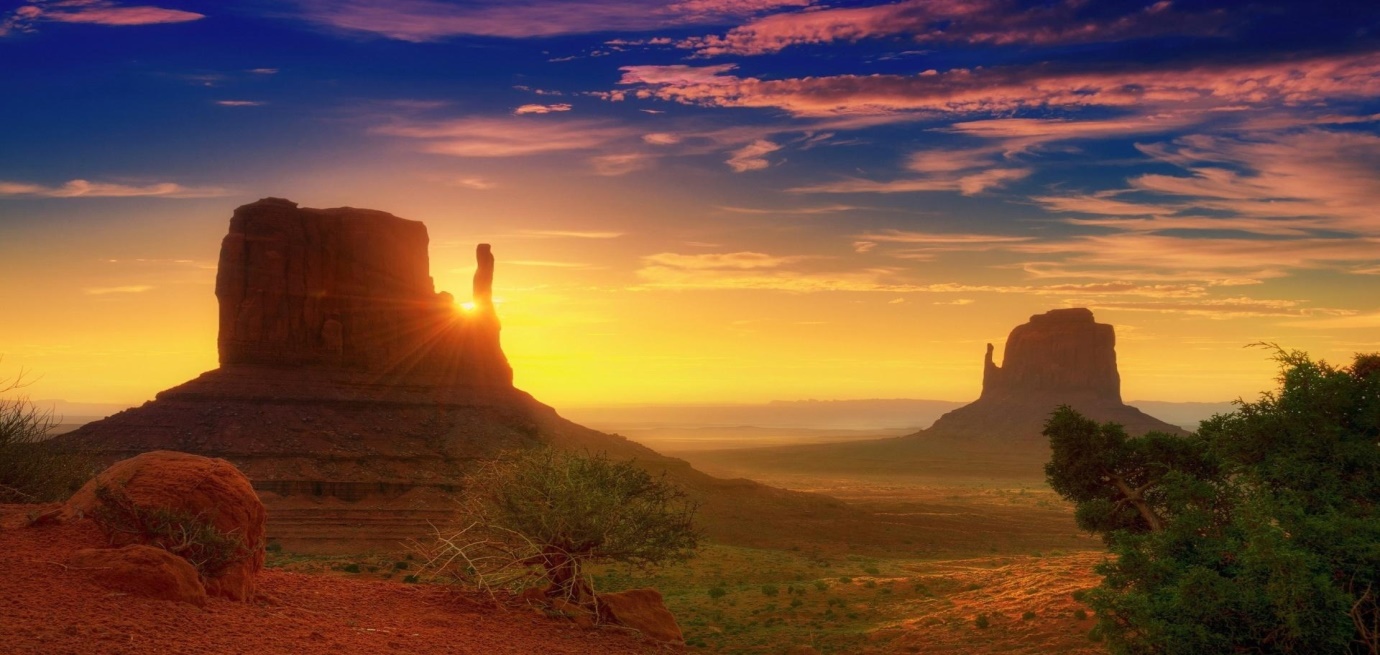Tourist attractions in Algeria
Algeria is often presented as the crossroads of three worlds: Mediterranean, Arab and African. The country presents plenty of opportunities for tourism and leisure activities.
Algeria has always enjoyed its privileged geographical position and considerable space. Mediterranean landscapes, vast semi-arid highlands and moon-like desert expanses make of Algeria a beautiful mosaic of contrasts in perfect harmony.
According to the latest report distributed by several environmental organizations, such as the World Organization for the Protection of the Environment and World Wide Fund for Nature, Algeria is among the best 10 countries in the world in terms of natural beauty and diversity.
Algeria has seven sites inscribed on UNESCO's World Heritage list: Beni Hammad, Djemila, the M'Zab Valley, the Tassili, Timgad, Tipasa and the casbah of Algiers.
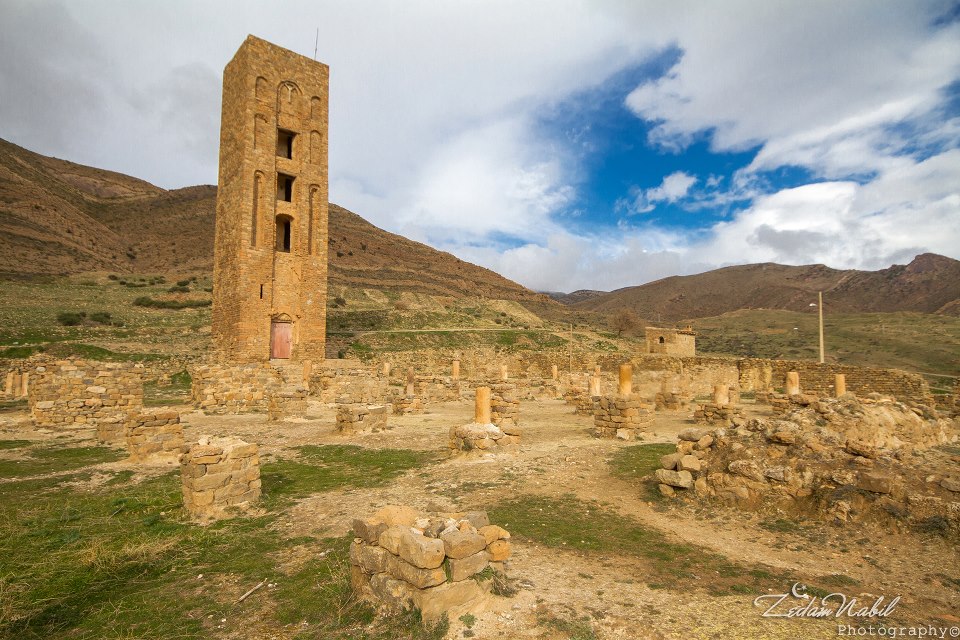
Al Qal'a of Beni Hammad
The Qal'a of Beni Hammad is a remarkable archaeological site located 36 km to the north-east of the town of M'Sila. This ensemble of preserved ruins is located in a mountainous setting. The Qal'a of Beni Hammad was founded at the beginning of the 11th century by Hammad, son of Bologhine (founder of Algiers). It is one of the most interesting and most precisely dated monumental complexes of the Islamic civilization. The Qal'a comprises, within 7 km of partially dismantled fortified walls, a large number of monumental vestiges, among which are the great Mosque whose prayer room has 13 aisles with eight bays, and a series of palaces.
Djémila
The site of Djémila is located 50 km north-east of the town of Sétif. Known under its antique name Cuicul, the city is an establishment of an ancient Roman colony founded during the reign of Nerva (96 - 98 A.D.). The Roman town occupied a singular defensive position. Remarkably adapted to the constraints of the mountainous site, the town has its own Senate and Forum. Around the beginning of the 3rd century, it expanded beyond its ramparts with the creation of the Septimius Severus Temple, the Arch of Caracalla, the market and the civil basilica. The site has also been marked by Christianity in the form of several cult buildings: a cathedral, a church and its baptistry. The site of Djémila comprises an impressive collection of mosaic pavings, illustrating mythological tales and scenes of daily life.
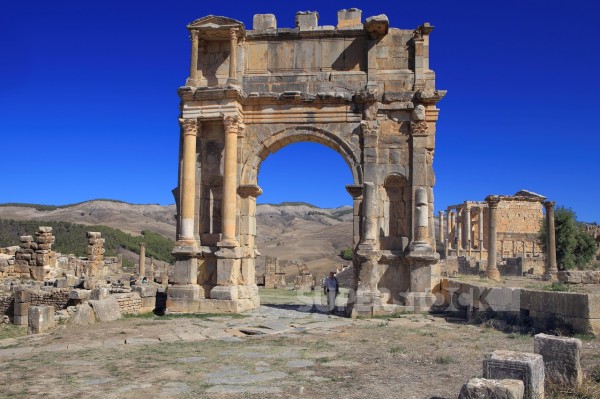
Kasbah of Algiers
The site was inhabited at least from the 6th century BC when a Phoenician trading post was established there. In this living environment where nearly 50,000 people reside, very interesting traditional houses, palaces, hammams, mosques and various souks are still conserved, the urban form of which bears witness to an effect of stratification of several styles in a complex and original system that has adapted remarkably well to a very hilly and uneven site.
The Kasbah of Algiers still retains its integrity. On the whole, the aesthetic character, material used and the architectural elements retain their original aspect that expresses the values for which the site was inscribed on the World Heritage List in 1992. The continuing residential function has strengthened the viability of the site as well as the integrity of its image. Restoration work of the built heritage of the Kasbah undertaken in the framework of the Safeguarding and Valorisation Plan is in conformity with the local and national standards and contributes towards maintaining the integrity of the site.

M'Zab Valley
Located 600 km south of Algiers, in the heart of the Sahara Desert, the M'Zab Valley form an extraordinarily homogenous ensemble constituting, in the desert, the mark of a sedentary and urban civilization possessing an original culture that has preserved its cohesion throughout the centuries. Comprised of ksour and palm groves (founded between 1012 and 1350), the M'Zab Valley has conserved practically the same way of life and the same building techniques since the 11th century.
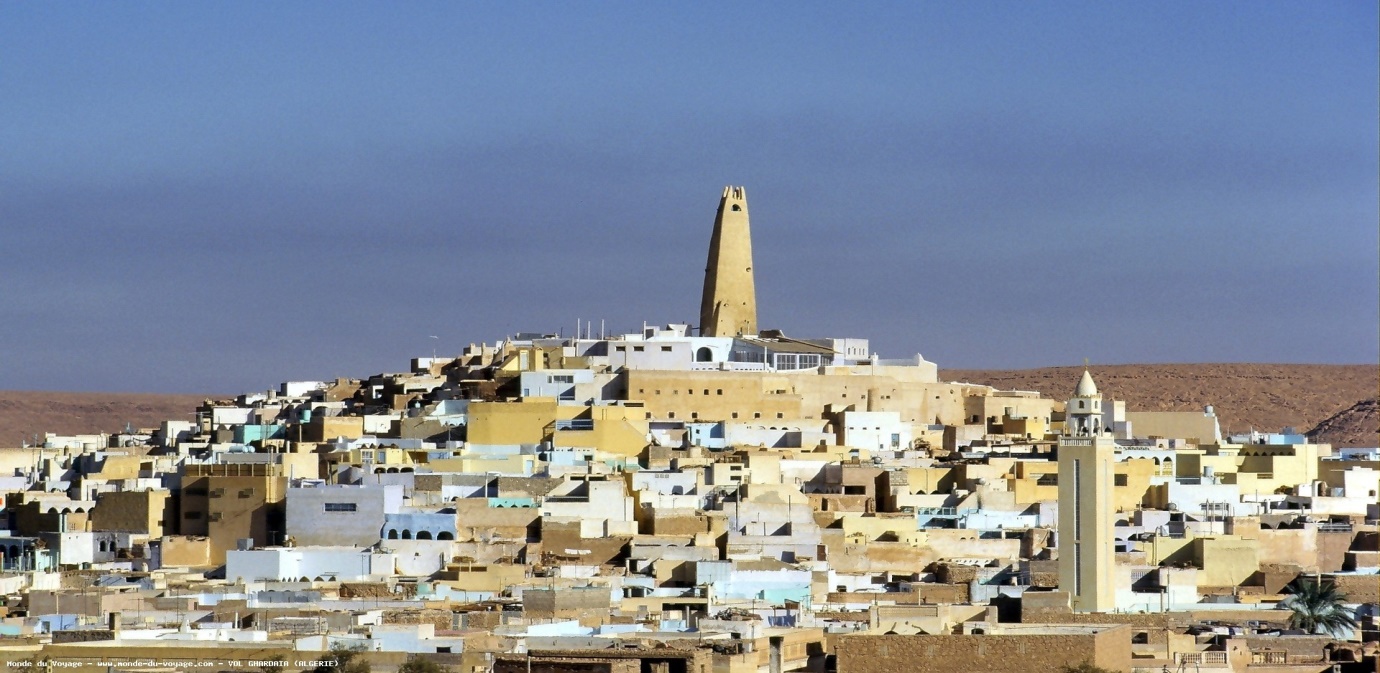
Timgad
Timgad, located to the north of the massif of the Aurès in a mountainous site of great beauty, is a consummate example of a Roman military colony. The Colonia Marciana Traiana Thamugadi was founded in 100 A.D. by Trajan. Its plan illustrates Roman urban planning at its height. During the Christian period, Timgad was a renowned bishopric. After the Vandal invasion of 430, Timgad was destroyed at the end of the 5th century by montagnards of the Aurès. The Byzantine Reconquest revived some activities in the city, defended by a fortress built to the south, in 539, reusing blocks removed from Roman monuments. Thamugadi which ceased to be inhabited after the 8th century.
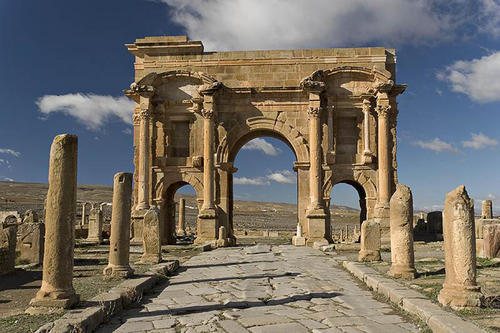
Tipasa
The archaeological site of Tipasa regroups one of the most extraordinary archaeological complexes of the Maghreb. This coastal city was first a Carthaginian trading centre, whose necropolis is one of the oldest and one of the most extensive of the Punic world (6th to 2nd century B.C.). During this period, Tipasa played the role of a maritime port. Numerous necropolis testify to the very varied types of burial and funerary practices that bear witness to the multicultural exchange of influences dating back to protohistoric times. The monumental, circular funerary building, called the Royal Mauritanian Mausoleum, associates a local architectural tradition of the basina type, to a style of stepped truncated roof covering, the result of the different contributions, notably Hellenistic and Pharaonic.
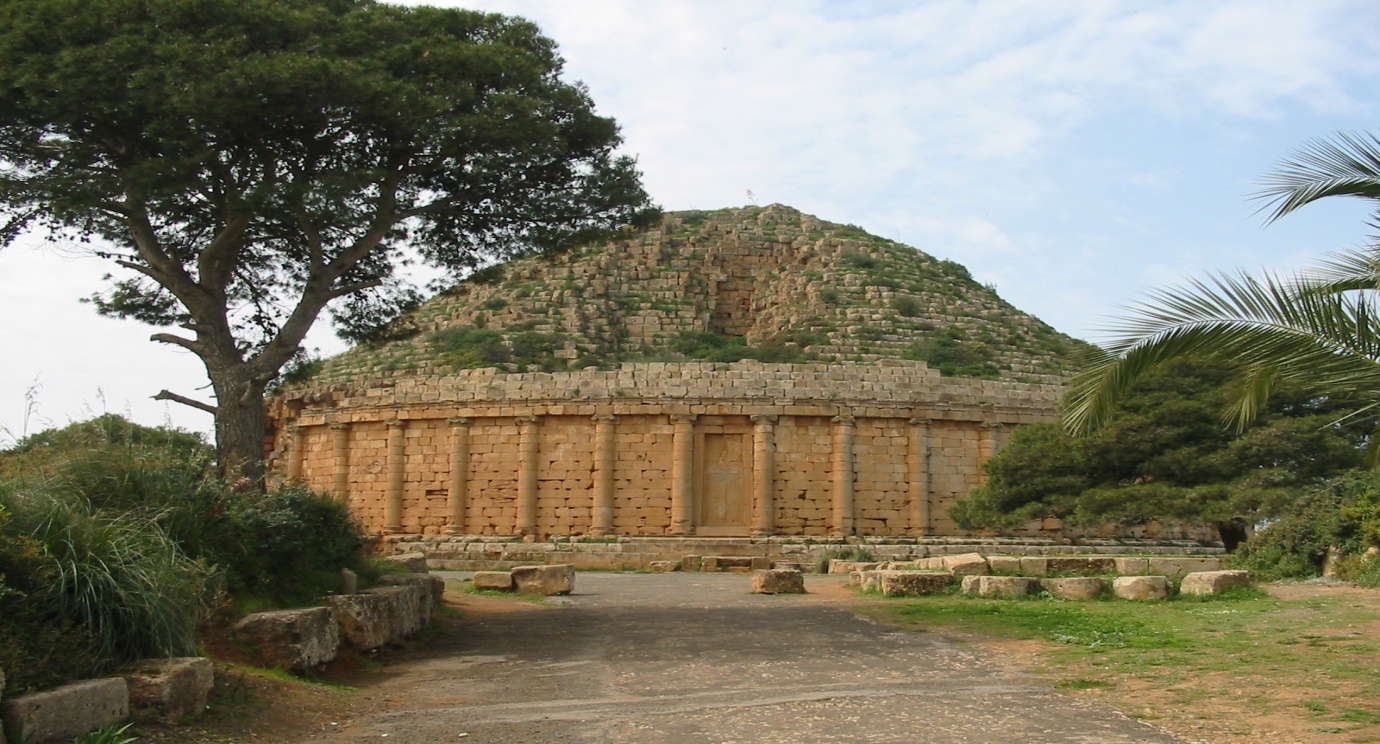
Tassili n'Ajjer
This site has one of the most important groupings of prehistoric cave art in the world. More than 15,000 drawings and engravings record the climatic changes, the animal migrations and the evolution of human life on the edge of the Sahara from 6000 BC to the first centuries of the present era. The geological formations are of outstanding scenic interest, with eroded sandstones forming ‘forests of rock’.
The exceptional density of paintings and engravings, and the presence of many prehistoric vestiges, are remarkable testimonies to Prehistory. From 10,000 BC to the first centuries of our era, successive peoples left many archaeological remains, habitations, burial mounds and enclosures which have yielded abundant lithic and ceramic material. However, it is the rock art (engravings and paintings) that have made Tassili world famous. 15,000 engravings have been identified to date.
The site is also of great geological and aesthetic interest: the panorama of geological formations with "rock forests" of eroded sandstone resembles a strange lunar landscape
